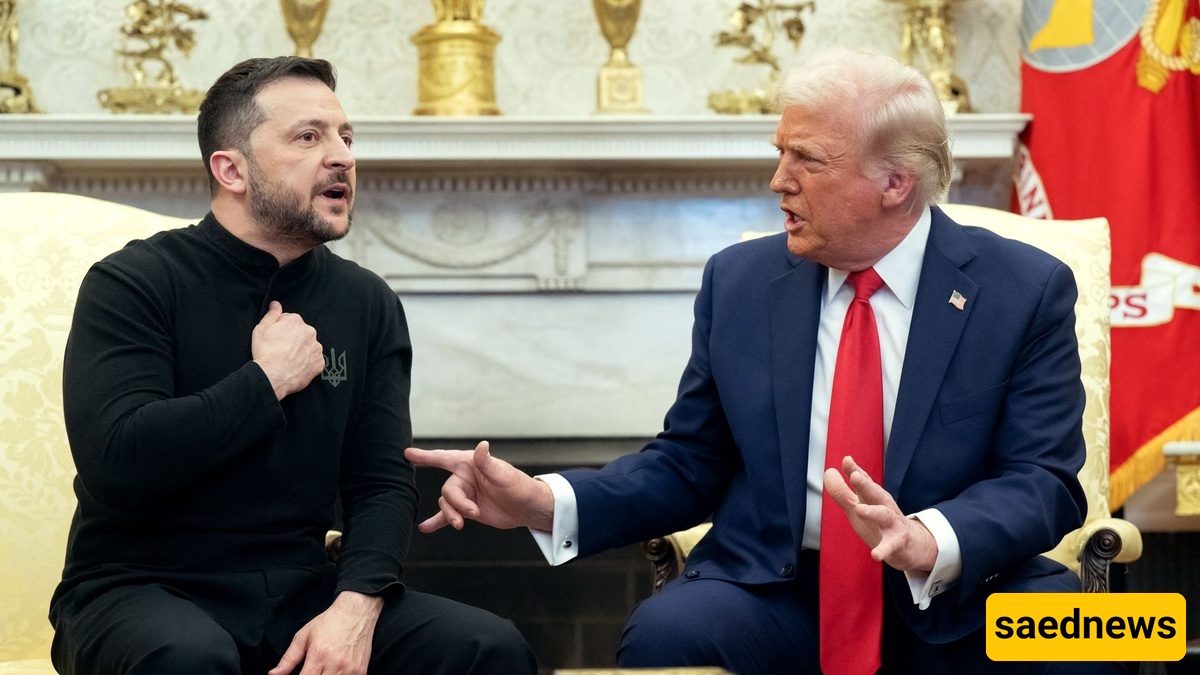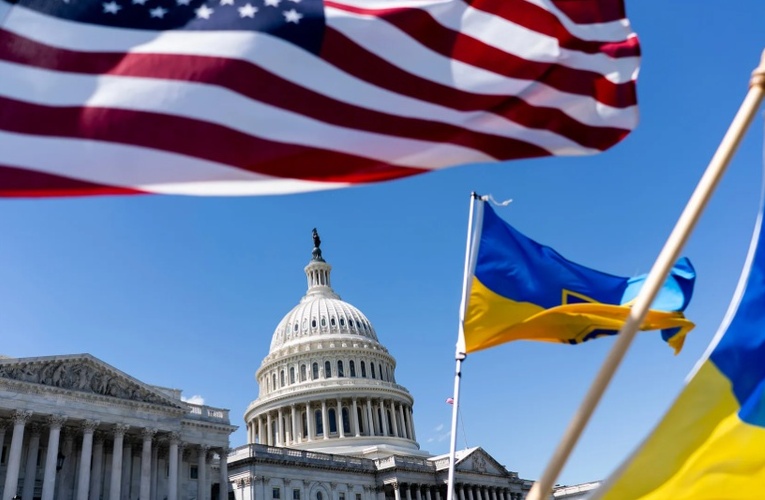SAEDNEWS: Donald Trump, following a bilateral meeting with Vladimir Putin in Alaska, which he described as a “very successful day,” announced that he intends to meet with Volodymyr Zelensky, President of Ukraine, in Washington on Monday.

According to SaedNews, citing CBS, Donald Trump, after his controversial meeting with Vladimir Putin in Alaska, which he described as a “very successful day,” announced that he intends to meet soon with Volodymyr Zelensky, President of Ukraine. This news comes at a time when the Alaska meeting not only failed to produce any concrete outcome to halt Russia’s war against Ukraine but also faced widespread reactions and doubts both inside and outside the United States. Trump attempted to present the outcome of this meeting as a step toward peace, but many analysts believe that Putin benefited more than any other party from the political and media environment surrounding the event, and now Zelensky must enter future negotiations under more complex conditions.

The Alaska meeting, held on August 15, 2025, marked the first direct encounter between Trump and Putin since the beginning of Trump’s new presidential term. The main focus of the discussions was the war in Ukraine, but the final outcome lacked any clear agreement on a ceasefire or cessation of hostilities. Trump, with his characteristic optimism, claimed that both sides reached a mutual understanding to move directly toward a “peace agreement” and stated that the ultimate goal, rather than a temporary ceasefire, was the complete end of the war. In contrast, Putin, in a post-meeting press conference, claimed that significant progress had been made but did not provide details. Many observers note that no practical document, written agreement, or concrete roadmap was released at the end of the meeting, which has further fueled doubts about the veracity of Trump’s claimed success.
Trump’s remarks regarding the upcoming meeting with Zelensky added further complexity to the situation. He announced that he would meet with the Ukrainian president in Washington on Monday to review the results of the Alaska meeting and discuss the possibility of initiating a direct peace process. Zelensky welcomed this development but simultaneously emphasized that no process can continue without Ukraine’s active participation in negotiations, and the security and future of his country must be guaranteed. Since the beginning of the war, Ukraine has repeatedly expressed concerns about behind-the-scenes agreements among global powers, fearing that parts of its territory or sovereign rights could be sacrificed under potential agreements. Consequently, Zelensky strives to secure Ukraine’s position at every stage of negotiations, especially during Trump’s high-profile meetings with Putin.
Europe’s reaction to the Alaska meeting and Trump’s planned meeting with Zelensky reflects deep concern over the continent’s security future. European leaders, including the British Prime Minister and EU officials, reiterated that Russia must have no right to veto or interfere with Ukraine’s path toward NATO and the European Union. They stated that any agreement reached without considering Ukraine’s sovereignty is not only unacceptable but could also lead to broader instability in Europe. This position indicates that Europe is highly concerned that potential agreements between Washington and Moscow could sacrifice Ukraine’s strategic interests and, ultimately, European security.
Inside the United States, Trump’s meeting with Putin was also met with serious criticism. Many Democrats and even some Republicans warned that the Alaska summit had become more of an opportunity for Putin’s diplomatic return to the global stage than a practical action to resolve the crisis. John Bolton, former National Security Advisor, described the summit as a “gift to Moscow” that, without granting any specific concessions to the West, provided Putin with international credibility and legitimacy. He noted that such an approach could recall ambiguous past experiences, where Trump’s high-profile meetings with controversial leaders produced no tangible benefits for the U.S. and its allies.
On the other hand, Trump’s supporters are attempting to frame the summit as the beginning of a new path for “direct and unmediated diplomacy.” In their view, by setting aside traditional models of multilateral negotiations, Trump seeks to reach a rapid agreement through direct communication with Russian and Ukrainian leaders. He even emphasized in his remarks after the Alaska summit that he does not intend to settle for a short-term ceasefire; only a comprehensive peace agreement, he argued, could resolve the Ukraine crisis. This approach may seem ambitious at first glance, but critics argue that it ignores field realities and the demands of European allies, which could ultimately lead to failure.
In Kyiv, the political community is closely monitoring Trump’s moves. Many political elites and Ukrainian media have warned about the potential weakening of Zelensky’s position in negotiations. The main concern is that, in his effort to reach a quick agreement, Trump might exert pressure on Ukraine to compromise—compromises that could include accepting the status quo in some Russian-occupied territories. Zelensky, who has emphasized full-scale resistance and defense in recent years, now faces a new diplomatic challenge: how to withstand potential pressure from Washington while still maintaining European support.
From the perspective of analysts, the outlook for Monday’s meeting between Trump and Zelensky is highly uncertain. On one hand, it presents an opportunity for Ukraine to solidify its position in the negotiation process and prevent marginalization. On the other hand, there is a risk that Trump, citing his “very successful day” with Putin, may seek to deliver a rapid achievement in the form of diplomatic promises—even if this achievement is largely symbolic rather than substantive. In such circumstances, the Trump-Zelensky meeting could determine the future trajectory of peace or the continuation of war.
Overall, the Alaska summit, despite Trump’s extensive promotion, produced no practical or tangible outcomes and, rather than contributing to a genuine peace process, primarily provided an opportunity for Putin’s return to the global stage. Now, all eyes are on the upcoming Trump-Zelensky meeting—a meeting that, if accompanied by positive results and concrete agreements, could potentially create renewed hope for de-escalation. However, if it merely becomes another political show, it will not help resolve the crisis and could even complicate the situation further. The international community, particularly Europe and the United Nations, believes that the only way to end the war is through a transparent, multilateral process based on international law, not behind-the-scenes agreements among the leaders of major powers.

